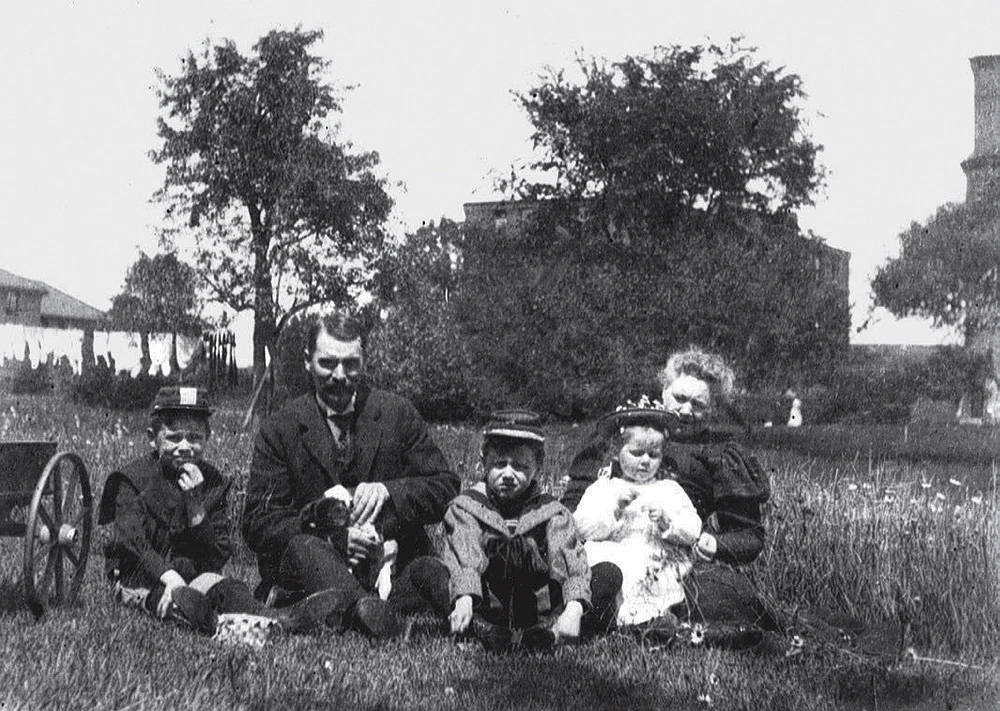In the spring of 1920, the inaugural dean of Harvard’s Graduate School of Education, Henry Holmes, scored a hiring victory. Walter E. Fernald, superintendent of the Massachusetts School for the Feeble-Minded and the world’s leading authority on intellectual and developmental disabilities, accepted a position as lecturer on mental diagnosis of children. “It would seem now that we can look forward not only to an effective program of instruction,” Holmes wrote to Fernald, “but also to research of great and increasing value.”
For a century, Fernald’s story has been eclipsed by that of the school given his name after his death, which became synonymous with abuse and human experimentation. His quarter-million-page archive was locked away by the state, completely out of chronological order, yet those documents reveal why Holmes sought Fernald’s support for his fledgling graduate school.
The Medical School of Maine graduate came to Massachusetts in 1887 to direct the nation’s oldest public school for intellectually and developmentally disabled people. He found a renowned institution in shambles, caring for dozens of children and adults in a squalid waterfront complex in South Boston.
Fernald saw an opportunity to do something visionary. He built a new campus in nearby Waltham, eventually housing thousands of people, and during the next 30 years, he reshaped nearly every aspect of how mental disabilities were seen and understood. John Harvey Kellogg sought his insights about digestion and disability; William James visited yearly with his students; Booker T. Washington and John Dewey read Fernald’s annual reports. He wrote policy used by states and nations. His diagnostic procedures presaged today’s use of social determinants of health. In the classroom, he created the first modern special-education curriculum and extended its influence nationwide. He also championed and mentored women, including Lorna Hodgkinson, the first woman to receive a doctorate from Harvard.
Then, early in the twentieth century, Fernald took a dark turn. Where once he believed that the disabled needed protection from a predatory world, he became convinced that the world needed protection from them. Fernald urged their segregation because of what he called their innate “defective delinquent” tendencies and embraced the emergence of eugenics, a pseudoscience that calls for removing human beings of “defective stock” from society. He championed a leading eugenics proponent, Henry Goddard, who introduced the IQ test in the United States and used it to describe a class of people with the harmful traits Fernald had defined. Goddard called them morons.
Together, Fernald, Goddard, and former Harvard biology instructor Charles Davenport, A.B. 1889, exerted a lasting, deeply negative influence on American conceptions of juvenile delinquency, immigration, disability, gender, and intelligence. But within a decade, Fernald began to observe flaws in Davenport and Goddard’s research, a concern amplified by fundamental personality differences. Unlike Davenport, Fernald was not an avowed racist, and he abhorred Davenport and Goddard’s calls to sterilize the disabled.
He had growing power to oppose them. In 1912, Henry Holmes praised Fernald’s work in his foreword to the first translation of Maria Montessori’s bestselling tome, The Montessori Method. That led to an honorary master’s from Harvard in 1913 and introduced his work to thousands of parents and teachers. In 1915, his expert testimony in a court case helped force the repeal of New York’s sterilization law and aided his ultimately successful effort to politically dismantle the eugenicists’ organizing body. Secretly, he also misappropriated funds from Davenport to locate hundreds of inmates who had escaped his own institution and found, to his great surprise, that most were leading successful lives.

Fernald hesitated to publish those results, but that changed after professional setbacks and personal loss. In 1917, psychologists overcame his opposition to their use of IQ tests on military recruits. A year later, his son Walter, A.B. ’12, died in the influenza pandemic. He emerged with newfound courage, publishing his study and writing that many former inmates had not needed lengthy institutionalization. In 1924, as president of the American Association for the Study of the Feeble-Minded, he stunned his colleagues, calling for radical “decentralization” away from institutions. His groundbreaking idea preceded the deinstitutionalization movement by nearly 50 years, but months later he fell ill and died, leaving no successor to enact his plan. In his absence, America’s love affair with eugenics and intelligence testing flourished.
In 1927, the Supreme Court endorsed forced sterilization of the intellectually disabled, while a network of hundreds of state institutions expanded, reaching a peak of roughly 230,000 inmates in 1967. The Fernald School housed one of the Cold War’s most disturbing chapters—using radioactive tracers on unsuspecting inmates—and the school’s supporters, resisting deinstitutionalization, kept its doors open until 2014.
The New England Journal of Medicine later called Fernald “the pioneer in treating the mentally deficient,” citing “his broadness of vision, especially towards a problem which many people before his time saw only in the narrowest possible manner.” The discovery of how far Fernald was willing to go to interrogate and challenge the eugenicists’ ideas as they emerged is a powerful historical antidote to claims that past abuses of the disabled were unknowable and unavoidable in their time.








